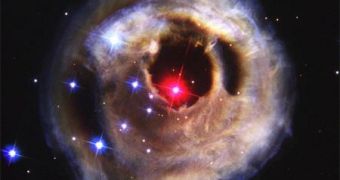Mysterious observations of variable stars have recently been made by astronomers. The unusual thing about these stars is the fact that they change in brightness, increasing and then rapidly decreasing it.
They think there may be a new category of stars, whose brightening events are dimmer than the cataclysmic explosions known as supernovae, but brighter than most stellar outbursts, called novae. Novae are produced when dense stars release enough hydrogen from a companion star to trigger nuclear fusion on their surfaces.
A team of astronomers led by Shrinivas Kulkarni of Caltech in Pasadena, US, observed a space object that, for a short time, became about 10 times brighter than the brightest nova but stayed at least 10 times dimmer than a supernova.
The observations, made with the Palomar Observatory in California, the Keck I telescope in Hawaii and the Spitzer Space Telescope, showed that the weird star maintained the intermediate brightness for almost two months, before gradually fading away.
Dubbed M85 OT 2006-1, the celestial light show could be caused by a stellar merger. This happens when pairs of stars orbiting each other fuse together, exchanging matter. The stars in this particular binary system have been estimated at about the size of our Sun.
The name given by the astronomers to the light effect is "luminous red nova" due to the fact that the brightness is reddish in appearance.
"We thus may have a fundamentally new class of variable stars, which join the novae, supernovae, and other categories," says Howard Bond, an astronomer at the Space Telescope Science Institute in Baltimore, Maryland, US.
A number of theories explaining the phenomenon were proposed. Some scientists say colliding stars could explain all the objects in the new class, while other claim the brightening in stars could be caused by a star swallowing one or more giant planets, possibly as the star bloats up and expands into a red giant - a phase the Sun will one day go through.

 14 DAY TRIAL //
14 DAY TRIAL //